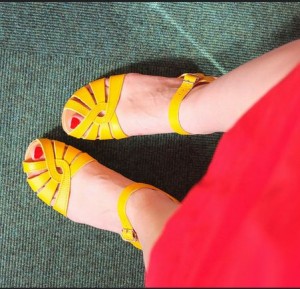 Walking can add a dynamic element to the learning experience and can be particularly effective for active learning, creativity and reflective practice. A University campus or city offer a variety of spaces for free roaming and stimulating sights and artefacts. This post shares some guidance on planning a walking activity. If you have experienced walking and learning, please do add your ideas and guidance here too.
Walking can add a dynamic element to the learning experience and can be particularly effective for active learning, creativity and reflective practice. A University campus or city offer a variety of spaces for free roaming and stimulating sights and artefacts. This post shares some guidance on planning a walking activity. If you have experienced walking and learning, please do add your ideas and guidance here too.
Participant preparation: Participants need to prepare for a walking activity. Above all this would involve appropriate, comfortable footwear. If the walk is outside this would include weather proofing. Rain doesn’t necessarily mean that a walking activity can’t go ahead if participants are prepared. If the event is inside, participants may need somewhere to store their coats and bags. Many public spaces such as museums or arts centres have lockers.
Health issues: Health issues may need to be taken account of particularly for longer walks. Walks can be adjusted accordingly such as avoiding steps or including refreshment breaks. Again participants may need preparing or to let the activity organiser know of any issues beforehand.
Guided walks: For guided walks outside, time needs to be taken to plan the route and the route must be physically walked beforehand. Consider open access to areas and whether access changes on different days or times, pavement widths, and where the group can safely cross the road. Also consider noise from traffic or other sources and how this could impact on conversation or thinking. Finding interesting areas or buildings can be enriching especially coming across places that participants may be unfamiliar with.
Location: For walking activities held inside, here are some factors to consider when choosing a location. Large museums, galleries, art centres, university campuses are all good choices. They are open to the public (or at least to your students or colleagues), spacious enough for groups to explore, full of interesting sites, artefacts and possibly architecture, photography is often allowed, and have access to toilets. A location where the group can meet before and after a walk such as a cafe or benches in or near the location can be very useful too.
Timing: Consider the time of day for your walk. Public places can be quieter in the morning and fill up as the day continues. Rush hours or lunch breaks can change the nature of a route or location.
Aims: Walking activities like all learning activities need clear aims and outcomes. Ensure participants know the aims and outcomes for the activity.
Pre-activity: Before undertaking a walking exercise the participants will need an introduction and some kind of activity. This could be a presentation, reading, getting to know each other, discussion, or a task. For example, we have asked students to conduct their own research about a place before the day or asked students to complete an exploration and discussion of their leadership values.
Groups: A walking activity could be conducted by an individual, pairs, small or larger groups. A small group could be split into pairs or parts of the walk could be for individuals. Each scenario needs managing slightly differently and needs to be appropriate to the learning outcomes.
Activity: There are numerous ways to enact walking activities. Walks could be guided, with parameters or completely free. Walking could involve activities such as conversation, thinking, finding of artefacts, telling of stories, scavenger hunts, taking photos, making notes, drawing, being lead or leading of others. This could also be adaptation of a meeting (personal tutoring, colleagues, team meeting, committee) to a walking discussion.
Post-activity: After a walking exercise it is useful to have an activity to draw together thoughts and reflect. This could be discussion, capturing reflections, sharing photographs, further reading or other tasks. This enables participants to focus and build on what they have learnt and experienced.
Here are some examples of our walking and learning practice:



July 3, 2015 5:16 pm
I really like the idea of moving whilst reflecting. It keeps the blood flowing to the brain whilst also creating a relaxing environment.
October 8, 2015 1:01 pm
I love this idea too and realize I don’t practice it whilst at work. Change will happen – yay!